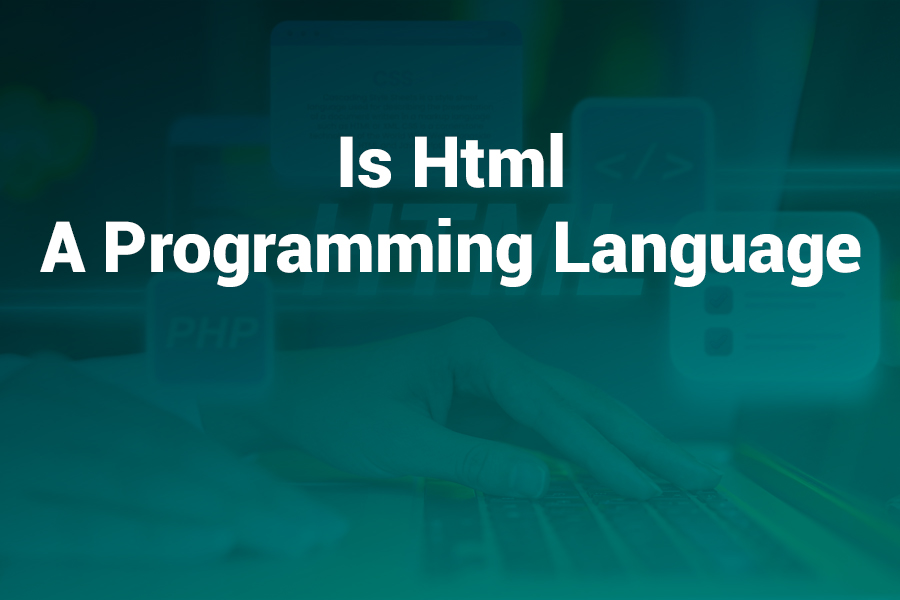Is HTML a Programming Language

The debate over whether HTML qualifies as a programming language has been ongoing for decades. Developers, educators, and even journalists have weighed in on this question, often with strong opinions. Some argue that HTML is simply a markup tool with no logic or computational ability.
Others believe it fits the broader definition of programming, since it tells computers how to present and interpret content. This disagreement creates confusion for beginners and sparks heated discussions in online communities.
The truth lies in understanding what HTML actually does, what programming languages are designed to accomplish, and how the digital world continues to evolve around these definitions.
In this article, you will learn what HTML is, why some consider it a programming language, why others do not, and how this debate impacts web development, education, and the future of technology.
Understanding HTML
HTML stands for HyperText Markup Language. It was introduced by Tim Berners-Lee in the early 1990s as the foundation of the World Wide Web. The purpose of HTML is simple: structure content on web pages. Using tags, attributes, and elements, HTML organizes text, images, links, and multimedia into a readable and accessible format for browsers.
For example, a heading is defined with <h1>, paragraphs with <p>, and links with <a>. These elements do not calculate or execute logic, but they instruct browsers on how to render information. This is why many developers argue that HTML is descriptive, not procedural.
HTML is also updated regularly. The latest standard, HTML5, introduced new semantic elements, multimedia support, and APIs for modern applications. These changes expanded its role but did not add direct programming logic like loops or conditions.
Defining Programming Languages
To decide whether HTML fits the label, it is important to define what programming languages are. Traditional programming languages like Python, Java, or C++ allow developers to implement algorithms, process data, and control hardware or software behavior. They support features such as variables, loops, conditional statements, and functions.
Programming is about giving a computer a set of logical instructions that it can execute. The result often involves computation, problem-solving, or automation. For this reason, many experts argue that HTML does not belong in this category, since it lacks the ability to handle logic independently.
However, the line is not always clear. Some languages like SQL are considered specialized programming languages even though they are domain-specific and lack full computational features. This comparison opens the door for HTML’s defenders to argue their case.
The Argument Against HTML as Programming
Most textbooks and universities teach HTML as a markup language, not a programming language. Here are the main reasons:
- No Logic Execution: HTML cannot perform calculations, loops, or conditional checks.
- Dependency on Other Languages: It often requires CSS for design and JavaScript for interactivity.
- Static Nature: Without scripts, HTML pages remain static and unresponsive to user actions.
For example, you cannot write an algorithm in HTML that sorts numbers or processes form data. You would need JavaScript, PHP, or another language to handle that. This limitation makes many developers firm in saying HTML is not a programming language.
The Case for HTML as Programming
On the other side, some argue that programming should not be restricted only to logic-based instructions. Programming, in its broadest sense, is about giving a computer instructions to produce results. HTML does that by instructing browsers how to display content.
Supporters also point out that HTML involves problem-solving. Developers must decide which elements to use, how to structure content, and how to ensure accessibility. While it may not execute algorithms, it still requires a structured thought process similar to programming.
In fact, Wired once argued that HTML qualifies as a programming language because it is a language designed to program the behavior of machines, even if only in presentation. The article emphasized that strict definitions exclude valuable tools and that language itself evolves with technology.
The Educational Perspective
For many beginners, HTML is the first step into coding. Teachers often introduce it because it is simple to learn, gives instant visual feedback, and builds confidence. Labeling it a programming language can encourage students to feel like real coders early in their journey.
However, there is a risk. If students believe HTML alone equips them for full software development, they may be unprepared for deeper programming tasks. Educators balance this by calling HTML a markup language while still recognizing its importance in the programming ecosystem.
Industry View and Practical Implications
In the tech industry, whether HTML is a programming language or not rarely matters. Employers value proficiency in HTML because it is essential for web development. No website can exist without it. Developers who master HTML, along with CSS and JavaScript, create the interactive and dynamic sites people use daily.
Job listings often group HTML under “programming skills” even if technically it is a markup language. Recruiters and hiring managers use the term broadly, which shows how flexible industry definitions have become.
HTML’s Relationship With Other Languages
HTML rarely works alone. It forms part of a triad that powers the web:
- HTML structures the content.
- CSS styles the appearance.
- JavaScript adds behavior and interactivity.
This partnership blurs the lines. Without HTML, CSS and JavaScript would have nothing to enhance. Without JavaScript, HTML would remain static. This interdependence explains why the argument about HTML’s classification continues.
The Evolution of HTML
Since its creation, HTML has evolved significantly. Early versions were limited to simple formatting. HTML5 introduced elements like <video>, <audio>, and <canvas>, which allow developers to create rich multimedia applications without plugins.
The modern web relies heavily on HTML5. Combined with APIs, it supports offline storage, geolocation, and even simple games. This progression makes HTML look more powerful and adaptable, further fueling the debate. While HTML itself does not compute, its expanding capabilities stretch traditional boundaries of what it means to program.
Why the Debate Persists
The core reason this debate endures is that definitions of programming vary. Traditionalists view programming strictly as logic and computation. Progressives broaden the term to include any structured set of instructions to a machine. Both perspectives have merit.
Another reason is culture. Developers often joke about HTML not being “real programming,” creating a divide between frontend and backend communities. These cultural distinctions reinforce the controversy and keep it alive, even when the practical impact is minimal.
The Role of HTML in Programming Education
For beginners, HTML acts as a gateway. It introduces concepts such as syntax, structure, and debugging. Even though it lacks logic, it prepares learners for programming mindsets. Many coding bootcamps start with HTML because it builds confidence and sets the foundation for more complex skills.
Some argue that dismissing HTML as “not programming” discourages learners. Recognizing it as part of the broader programming world makes newcomers feel included and motivated.
Comparing HTML to Other Languages
To understand HTML’s classification, it helps to compare it with other languages:
- CSS: Like HTML, CSS is not logic-based, yet it is considered essential.
- SQL: Specialized for databases, SQL is widely called a programming language despite being domain-specific.
- Markdown: Similar to HTML in simplicity, Markdown is rarely debated because it lacks formal recognition as programming.
These comparisons highlight inconsistencies in how languages are labeled. If SQL qualifies, some argue, why exclude HTML?
HTML in the Modern Tech Ecosystem
Today, HTML is unavoidable. Whether you build websites, mobile apps, or hybrid applications, HTML plays a role. It integrates with frameworks like React, Angular, and Vue, which rely on HTML structures to function. Even desktop apps built with Electron use HTML for rendering.
Its universality means that arguing about its classification does not change its practical necessity. Developers must learn HTML regardless of the label.
The Broader Meaning of Programming
The heart of the debate is philosophical. Should programming be limited to logic-driven languages, or should it expand to include all structured computer instructions? If it is the former, HTML does not qualify. If it is the latter, HTML belongs in the club.
Language evolves over time. What was once excluded may eventually be included. Programming definitions may broaden as technology blurs the boundaries between markup, scripting, and computation.
Conclusion
So, is HTML a programming language? The answer depends on how you define programming. Technically, HTML is a markup language that structures content but does not execute logic. By strict standards, it is not programming. Yet in broader, practical, and cultural contexts, it can be considered a form of programming, since it instructs machines to produce outcomes.
The debate itself is less important than the skills HTML provides. It is the foundation of the web, the gateway for new coders, and the essential partner to CSS and JavaScript. Whether or not you call it a programming language, mastering HTML is non-negotiable for anyone entering technology.
The next time someone asks this question, the best answer may be: it does not matter. What matters is that HTML powers the digital experiences we use daily, and learning it is the first step to programming in a broader sense.
